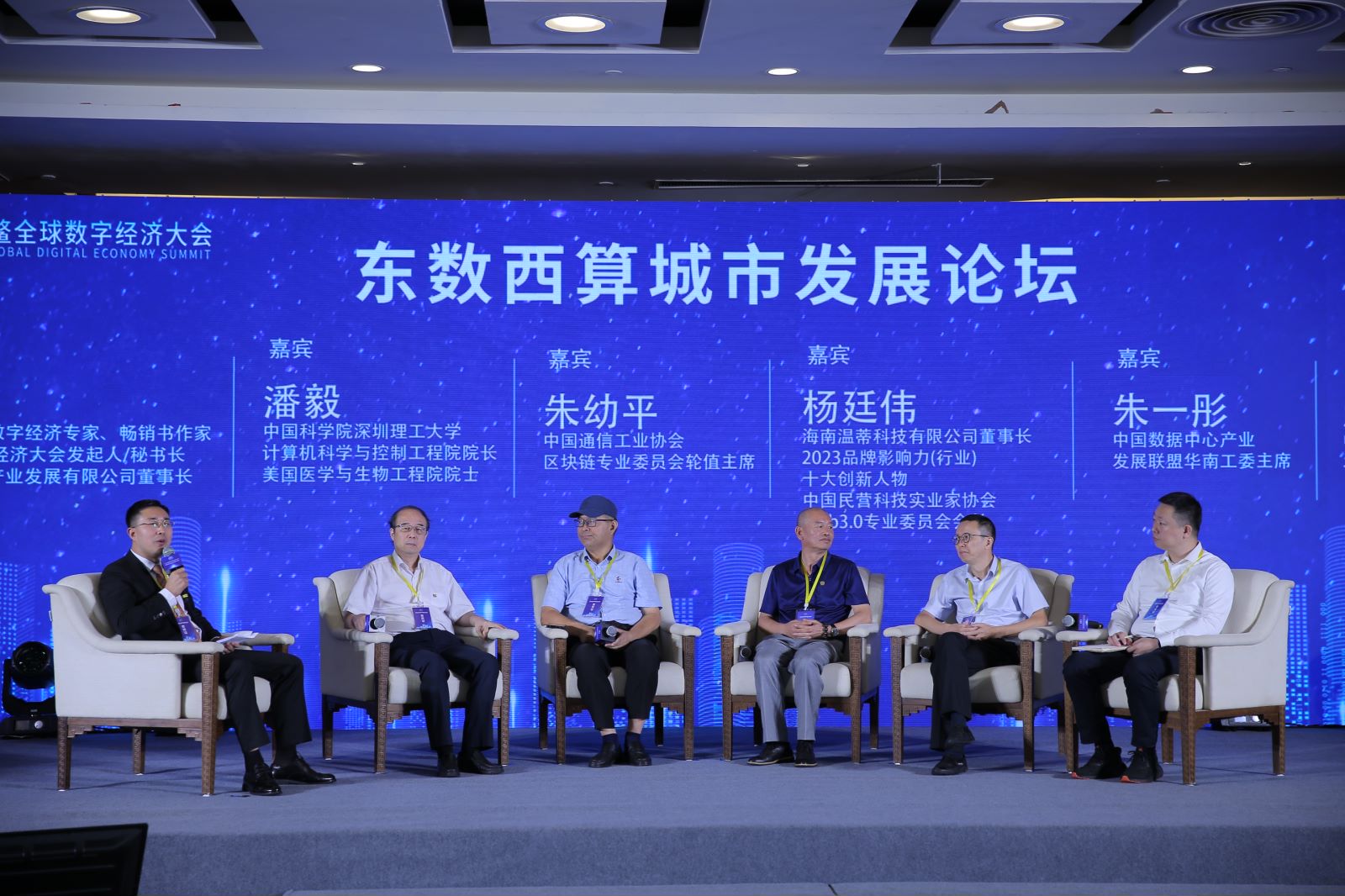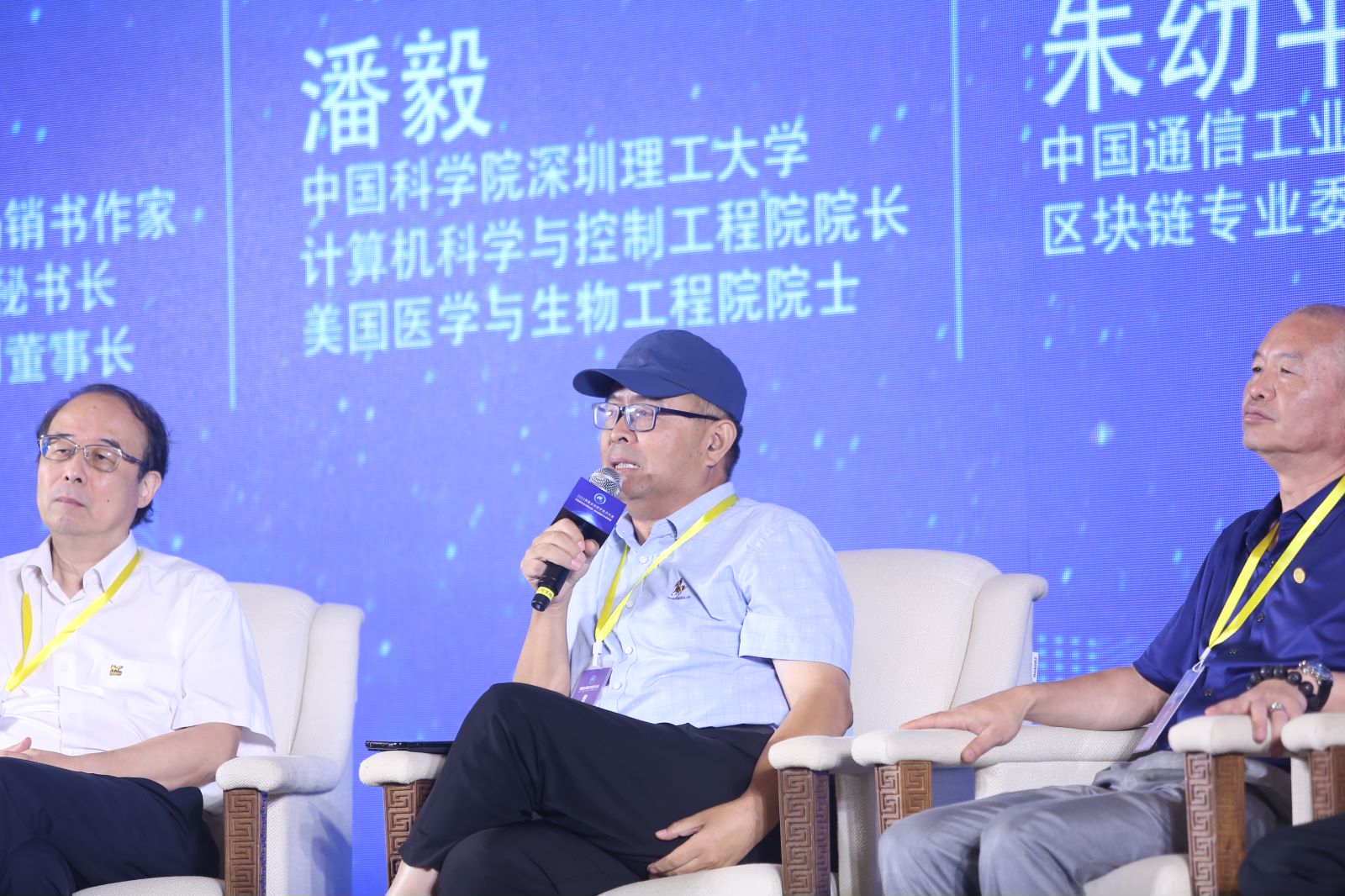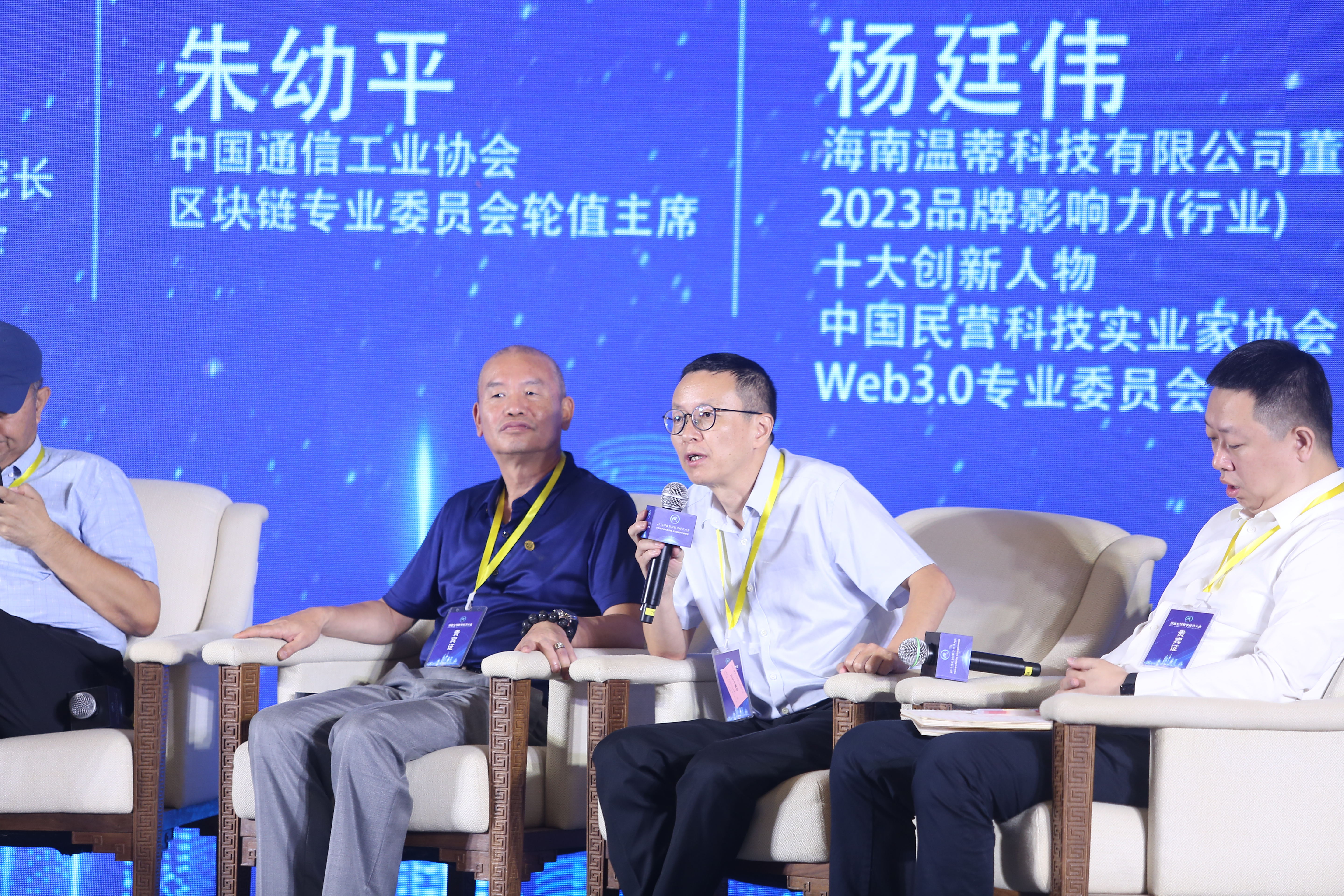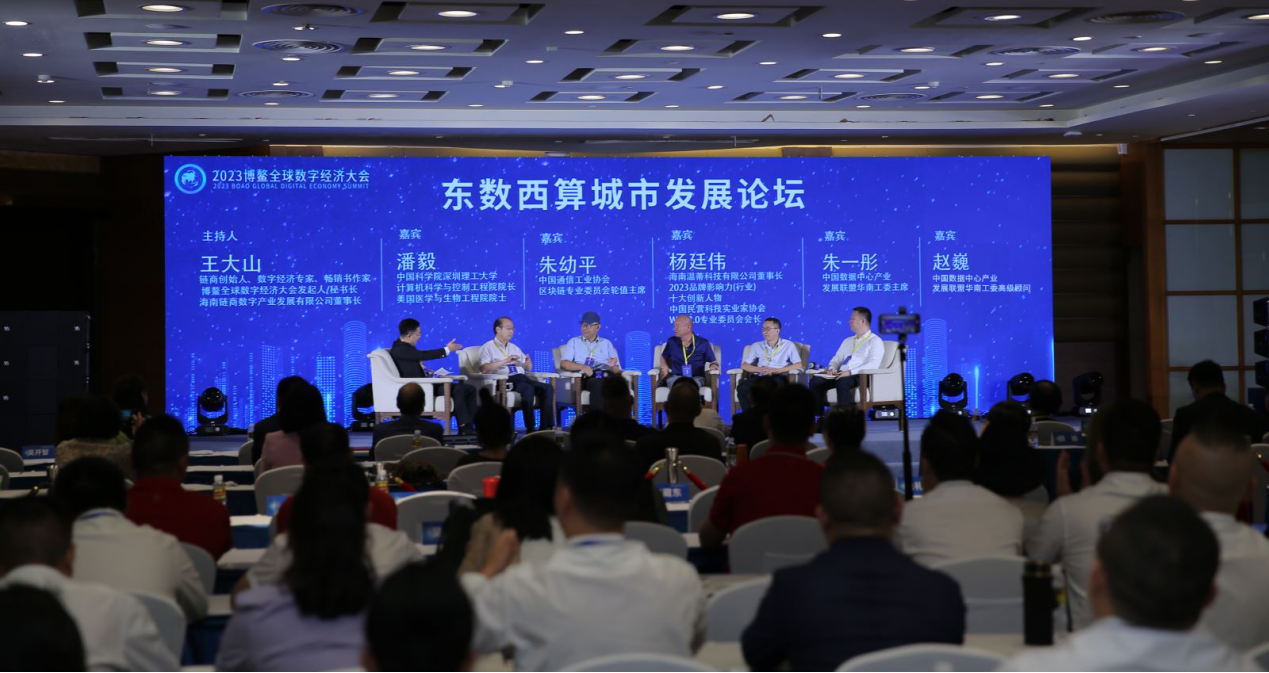In order to actively implement the overall layout plan for the construction of a digital China, vigorously develop the digital economy and build a digital China, fully leverage the advantages of the Boao Forum for Asia scene in Qionghai City, Hainan Province, promote the deep integration of digital technology and the real economy, empower the transformation and upgrading of traditional industries, and give birth to new industries, new formats, and new models, under the guidance of relevant national ministries and departments and with the support of the Qionghai City Bureau of Commerce in Hainan Province, The Boao Global Digital Economy Conference 2023 is jointly hosted by the Organizing Committee of the Boao Global Digital Economy Summit, Hainan Chain Commerce Digital Industry Development Co., Ltd., Qionghai Conference and Exhibition Industry Association, Hainan COSCO Shipping Boao International Conference Services Co., Ltd., Guangdong Datong World Financial Research Institute, Hainan Wendy Technology Co., Ltd., and Gongsen Digital Technology (Hainan) Co., Ltd It will be held from September 26 to 28, 2023 at the Boao Forum for Asia International Conference Center in Qionghai City, Hainan Province. At this conference, the "East Counts West Counts Urban Development Forum" was held simultaneously.
Wang Dashan, the founder of the chain trader, an expert in digital economy and the secretary-general of the Boao Global Digital Economy Summit, presided over the dialogue of the "East to West Urban Development Forum". The guests in the dialogue were: Pan Yi, the president of the School of Computer Science and Control Engineering of Chinese Academy of Sciences Shenzhen University of Technology, the chief scientist of the Chinese Academy of Sciences Shenzhen Institute of Advanced Technology, Zhu Youping, the rotating chairman of the Blockchain Professional Committee of the China Communications Industry Association, Yang Tingwei, Chairman of Hainan Wendy Technology Co., Ltd., Zhu Yitong, Chairman of the South China Working Committee of the China Data Center Industry Development Alliance, and Zhao Wei, Senior Advisor of the South China Working Committee of the China Data Center Industry Development Alliance.

Founder of Chain Business, Digital Economy Expert, and Secretary General of the Boao Global Digital Economy Summit, Wang Dashan: In February 2022, the National Development and Reform Commission, the Central Cyberspace Administration, the Ministry of Industry and Information Technology, and the National Energy Administration jointly issued a notice agreeing to launch the construction of national computing power hub nodes in the Beijing Tianjin Hebei, Yangtze River Delta, Guangdong Hong Kong Macao Greater Bay Area, Chengdu Chongqing, Inner Mongolia, Guizhou, Gansu, and Ningxia, And 10 national data center clusters including Zhangjiakou cluster were planned. Since then, the overall layout design of the national integrated big data center system has been completed, and the "East Calculation and West Calculation" project has officially been fully launched. The implementation of the East West Calculation Project is the top-level design for the construction of national hub nodes, which is conducive to improving the overall computing power level of the country, promoting national security construction, and promoting ecological compensation and green development; The implementation of the "East Calculation and West Calculation" project will open up the digital economy arteries in the east and west, build a domestic economic cycle, support the development of the digital economy, and promote the digital transformation of industries towards deeper development; The implementation of the East West Computing Project will guide large and ultra large data centers to cluster within the hub, forming a data center cluster, thereby improving the overall efficiency of computing power scaling and driving the development of upstream and downstream industries related to data centers.
Since the comprehensive launch of construction, the "East Counts West Calculation" project has gone through a year and a half. This year, under the leadership of Professor Zheng Danhui, Chief Planning Advisor of the Boao Global Digital Economy Summit and Senior Researcher at the Southern Digital Media Research Institute of Southern Daily, we visited Qingyang, Gansu, the computing power hub in the northwest, and Shaoguan, Guangdong, the computing power hub in the south. We had many discussions with relevant leaders and teams on big data, computing power, and urban development, We have also made preliminary preparations for the promotion of the Boao Global Digital Economy Conference. We also see that the development and implementation of the "East Calculation and West Calculation" project face many opportunities and challenges. From the perspective of society and the market, what are the benefits of the East West Calculation Project for the government? What opportunities are there for businesses? Guests, please share your opinions.

还有一个就是技术方面,这么多的超算,怎么去融合?东部的数据产生了,要送到西部,要知道送到哪去?要调度分配,是送到甘肃这个西部,还是送到贵州那边?这些问题都要去解决的,所以对企业来说是有好处。国家支撑了这么一个平台,这么一个计划,对我们都有好处。西部也解决了一些就业问题,也得到了很多好处,但是技术层面和经济层面还是有很多的研究要做,才能真正解决问题达到目标。




Zhao Wei, Senior Advisor of the South China Working Committee of the China Data Center Industry Development Alliance: Regarding the benefits of Eastern and Western calculations for enterprises present here, I will provide four interpretations and reflections on this issue to share with you:
Firstly, we have identified some issues during our visits, and once these issues are exposed, the entrepreneurs present may discover opportunities within them. Just now, Chairman Zhu also talked about how many nodes can run out of 8? In fact, it needs to have underlying logic when it comes to running out. When the 8 major nodes are implemented in different places, the top-level design of the city is constantly changing, which urgently needs to be optimized. We have found that there is no coherent blueprint for designing this data center industry in the first and second years. This blueprint is often being modified, and the implementation of this project may still be problematic.
The second consideration is the issue of data security after the construction of so many data centers? Perhaps when we talk to the leaders of these data centers, they are very concerned about infrastructure issues. How can I build it well? Did it consider safety issues during the construction process? This security is not only about network security, physical security, and boundary security, but also includes the issue of address disasters during the land acquisition process. This aspect needs to be considered.
The third issue, after so many data centers have been built, is the issue of talent. A data center with 2000 aircraft requires 26 to 32 people to operate 24 hours a day, which is a standard configuration as the data center is uninterrupted. Just now Professor Zhu also mentioned that there will be millions of aircraft in the country, and our plan for the central region this year is 300000. What concept? How many people do we need? If this talent cultivation is recruited locally, it is very simple. And all the good talents in the data center are in Beijing, Shanghai, Guangzhou, and Shenzhen. Would they be willing to go to mainland cities or remote areas to do maintenance and management work? How to solve the problem of localization in talent cultivation? This is also a question that we need to think about.
The fourth issue is that we call on local governments to increase policy investment, including the issue of electricity bills. For example, in mainland China, it may cost 60 cents or 70 cents, while in Inner Mongolia it costs 24 cents or 30 cents. The maximum 60% consumption of data centers is related to electricity. Can local governments provide greater support in electricity consumption.

Wang Dashan: Thank you to the five guests for discussing the opportunities and dividends brought to the government and enterprises from different perspectives. In fact, the topic that Mr. Zhao just shared, with the topic we will discuss next, is a national engineering project that brings many opportunities, but also many challenges behind it. Currently, what I understand is that among so many cities, Guiyang is relatively well developed, and its big data trading center is also quite influential. Some other cities, such as Gansu Province, are using the whole province's efforts to build Qingyang. Looking at Guangdong, Guangzhou, and Shenzhen, where the digital economy is relatively developed, many people are not yet familiar with Shaoguan as a big data node. In fact, more people need to promote it, and the government also needs to do some research. Today's Urban Development Forum is also being laid out for the future. We plan to launch the "East West Calculation Mayor Development Forum" in 2024, so there will definitely be a lot of work to be done next. For East China and West China, there are both opportunities and challenges, as well as many difficulties. From the perspective of the government, including our enterprises, it is also difficult to find a way to enter. Due to time constraints, we would like to invite two guests to share the challenges and difficulties surrounding the calculation of numbers from east to west, as well as the ways to break through them?
Zhu Yitong: Actually, as mentioned earlier, the government should seize this opportunity and seize the opportunity. At that time, Guizhou really gave great policies, and every year there were cloud computing and big data forums for extensive promotion. So my suggestion is that the government should provide policies and corresponding supporting facilities, while also promoting them. I have also been to some places and always thought that the fragrance of wine is not afraid of deep alleys. Now, the fragrance of wine also needs to be advertised, right? We still need to carry out some publicity.
Through the support of this series of policies, I believe that currently, the entire digital economy is flourishing. However, in reality, from the situation in the past two years, the overall number of users in our data center is still shrinking, especially the demand for BAT, which has grown wildly in the past few years to layoffs in the past two years. This may have entered a relatively stable stage.
With the emergence of ChatGPT, including the entire digital industrialization, artificial intelligence and other big models, future data will definitely have a large-scale explosion, and this data will be divided into general cold data, which can be easily accessed through ordinary calls. At the same time, there is also a demand for computing power data, which is higher than the requirement for general data, and this is the first one.
Secondly, in terms of data center construction, I also suggest that we have moved from the original 2 kW and 5 kW to 10 kW, 20 kW, and 50 kW, and even the emergence of a single machine expensive job title like 100 kW. So when constructing, it is important to consider the needs of the customers. That is to say, if you build a 5-kilowatt building and suddenly have a demand from a 50 kilowatt customer, you will need 10. At this point, you said it would be difficult to renovate it again. Someone once asked me if it's possible to convert a general-purpose computer room into a computing power room? It's not very appropriate for me to use a metaphor, just like how it's difficult to transform a woman into a man. The entire infrastructure of the data center, including those that cannot be solved by ordinary air cooling, requires liquid cooling to solve this heat dissipation technology, and so on. It is better to rebuild than to demolish it. Reconstruction can build two, but if you demolish it, you can only build one, and it may not be possible to build such a situation. So it is necessary to carefully consider, have a forward-looking perspective, and combine user needs to build this data computing power center. Okay, thank you all.
Academician Pan Yi: From a historical perspective, the supermarket used to be a relatively high-end product, so it had a center in Guangzhou, and later it was built in both Tianjin and Changsha. The advantage is that there are many professors and expert talents. Wuxi has a high-performance research institute, not to mention Beijing. So now that we're done, how many experts are going? It's just a matter of talent. There are not enough personnel to maintain it, and whether college students are willing to go is a question that the government needs to consider.
Another issue is how to coordinate. With so many centers, who will organize this issue? In history, we used to be supercomputing Thinking Machines. In fact, this small thing with 400000 CPUs was very similar to GPUs. It was specially processed bit by bit, and later many supercomputing centers thought machines died.
Why died? Because the price is expensive, but there are too few users. Why is it that although our PC is cheap now, it has grown due to the large number of users, so the issue of supercomputing is also a headache. Can we make money? What do we think of after the supercomputer dies? Later in history, it was mentioned to use Cluster Computing, also known as Cluster Computing. I have 50 computers in my laboratory, so I can connect them together and calculate the total number myself. This idea has been expanded to be called Grid Computing, which means that French computers can be used by me, while Tsinghua can be used by me. When I go to France, it can also be called by the UK, so the UK can also be used by France. The idea was good, but it still failed.
What is the reason for the failure? It's simple, everyone is selfish. Why should I use this machine for Peking University after buying it for 1 million yuan? Why should I use it for Guangzhou after buying 10 million yuan from Peking University? If everyone is unwilling to use it for others, it means they have failed again. The current East West calculation is actually the cloud competition, which is cloud computing. It's just using market rules, you spend as much money as you use CPU, that's great. So now the concepts of grid computing and cloud computing are integrated in the East, West, and Computing. There are actually only two successful cases of grid computing worldwide. One is the success of China's education network, and the government said that you must open up as many machines as possible. This is my money. Okay, open up, universities open up, successful, this is the government's order. Another one is the European Union. If I spend money, you must be open, that's okay. Can the government say that now that the East and West have been calculated? For example, our local government, Suzhou City, has invested so much money. Although the government forces you to calculate things in the east and west, or Guizhou has invested so much money, it's easy to talk if it's from the central government. Why? He has to help me calculate my past in Suzhou, why? Central money. If this money is from Guizhou, it may not be easy to talk about, why should I help you calculate it? These issues need to be resolved. So what I mean is that today's East West computing should integrate price allocation and power allocation among grid computing, supercomputing, and cloud computing, and solve the problem of resource allocation as much as possible, otherwise there may be major problems.
Wang Dashan: Thank you to all the guests for sharing. Counting the East and West is a big topic that cannot be carried out on stage for a limited time today. However, we will have continuous actions in the future. Under the leadership of the government and the joint efforts of experts, we will go to major cities, from Qingyang, Shaoguan, Guiyang, Shanghai, Wuhu, as well as Zhongwei in Ningxia and Helingeer in Inner Mongolia, all of which are worth visiting. There is an opportunity for all the guests present to walk in together. I am particularly pleased that the guests on stage today are well-known experts and scholars in the fields of digital economy, big data, and cloud computing, including technical experts and academic experts. Therefore, this is also what the government needs. The government also hopes that the organizing committee of the Boao Global Digital Economy Summit can promote such things, so next we will form an expert advisory committee to provide advice and advice for the government and enterprises, so it is worth looking forward to. Thank you very much to the guests for their sharing, and also to all the guests below for listening. Let's work together to create excitement. Thank you.